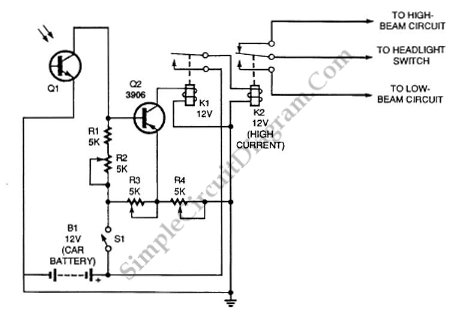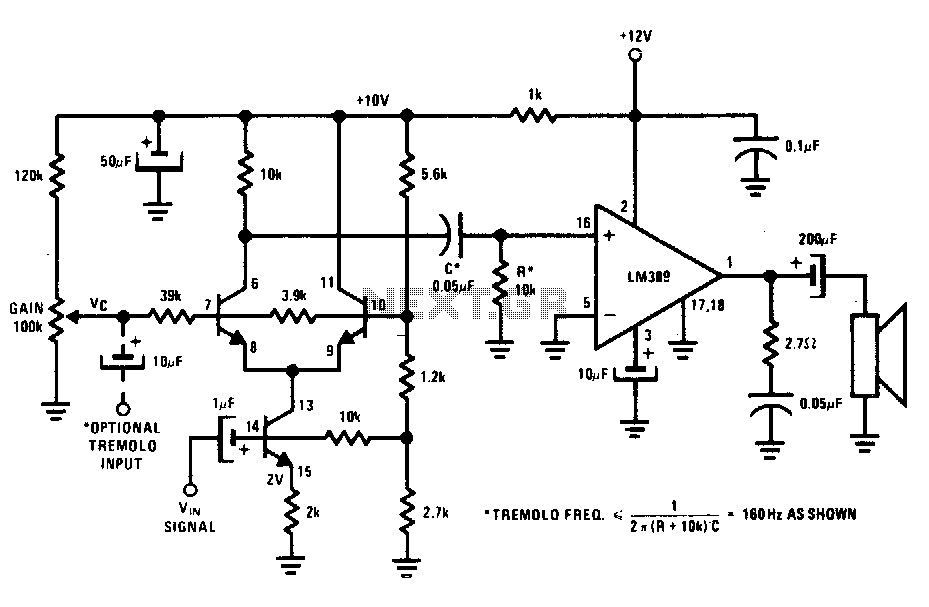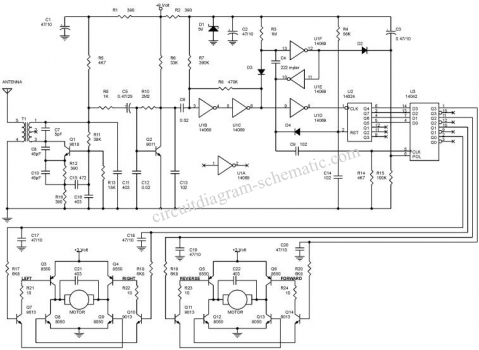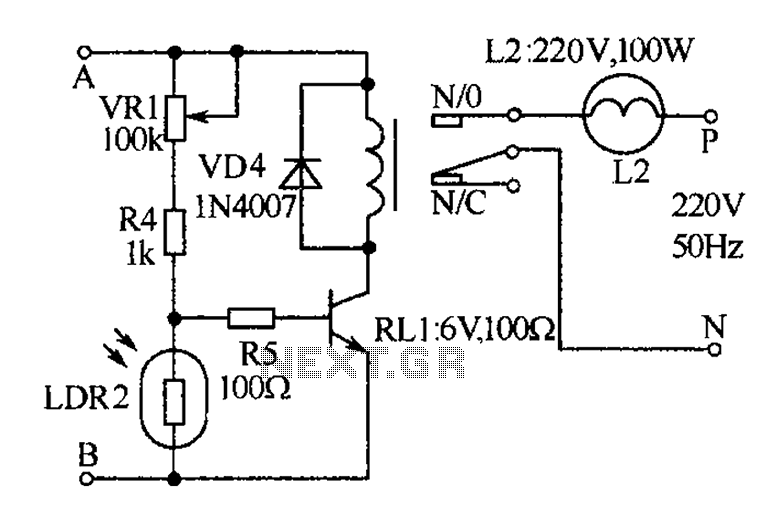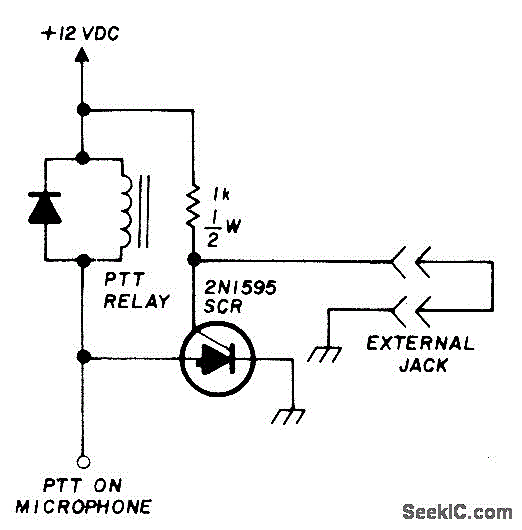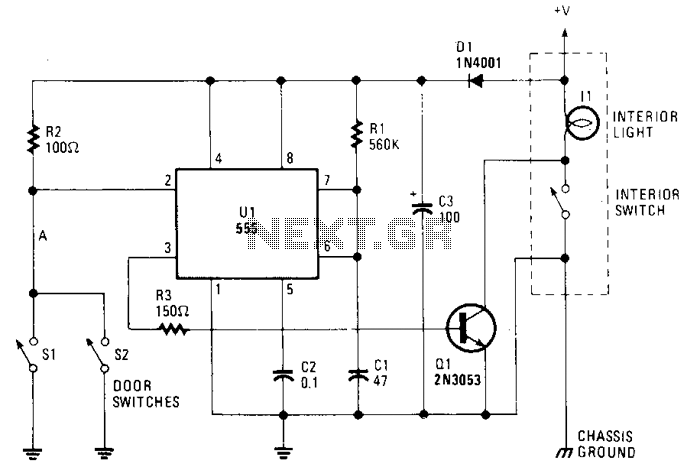
light activated led scr
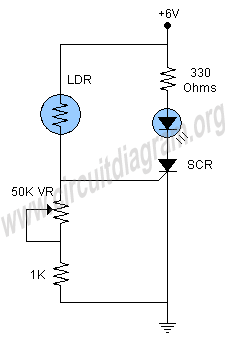
The schematic presented is a circuit for a light-activated LED utilizing an SCR (Silicon Controlled Rectifier). SCRs, which resemble transistors in appearance, operate on different principles compared to transistors. In this circuit, the SCR functions as a switching device. When the Light Dependent Resistor (LDR) detects light, its resistance decreases, triggering the SCR and activating the LED. A 50K variable resistor is incorporated to adjust the light level required to turn on the SCR and illuminate the LED. The circuit can be powered by a 6V battery or power supply.
The light-activated LED circuit featuring an SCR is a practical application of semiconductor technology, showcasing the unique properties of SCRs in switching applications. SCRs are four-layer, three-junction devices that can be turned on by applying a small gate current, making them ideal for controlling larger loads like LEDs in response to light levels.
The circuit operates by integrating an LDR, which serves as a light sensor. Under low light conditions, the LDR exhibits high resistance, preventing current flow through the SCR. As ambient light increases, the resistance of the LDR decreases, allowing sufficient current to flow to the gate of the SCR. This gate current triggers the SCR into conduction, creating a path for current to flow through the LED, thus illuminating it.
The inclusion of a 50K variable resistor allows for fine-tuning of the light sensitivity. By adjusting this resistor, the threshold at which the SCR turns on can be modified, enabling the user to set the desired light level for activation. This feature is particularly useful in applications where varying light conditions are present.
The circuit's power supply can be sourced from a 6V battery or a compatible power supply, ensuring that it operates efficiently in various environments. The simplicity of this design makes it suitable for educational purposes, as well as practical applications in automatic lighting systems, where the LED can serve as an indicator or a functional light source based on ambient light conditions. Overall, this light-activated LED circuit effectively demonstrates the principles of light sensing and solid-state switching using SCR technology.The schematic shown below is a circuit of light activated LED using SCR. SCR (Silicon Controlled Rectifiers) or thyristor are physically looks like transistors but their internal circuit and working procedure is totally different as compare to the transistors. Both SCR and transistor can work as In this circuit the SCR is working as a switching de vice. When the LDR will receive light its resistance will decrease which will switch on the SCR and the LED becomes activated. The 50K variable resistor is used to adjust the amount of light on which you want to switch on the SCR and activate the LED.
The circuit can be operated with 6V battery or power supply. 🔗 External reference
The light-activated LED circuit featuring an SCR is a practical application of semiconductor technology, showcasing the unique properties of SCRs in switching applications. SCRs are four-layer, three-junction devices that can be turned on by applying a small gate current, making them ideal for controlling larger loads like LEDs in response to light levels.
The circuit operates by integrating an LDR, which serves as a light sensor. Under low light conditions, the LDR exhibits high resistance, preventing current flow through the SCR. As ambient light increases, the resistance of the LDR decreases, allowing sufficient current to flow to the gate of the SCR. This gate current triggers the SCR into conduction, creating a path for current to flow through the LED, thus illuminating it.
The inclusion of a 50K variable resistor allows for fine-tuning of the light sensitivity. By adjusting this resistor, the threshold at which the SCR turns on can be modified, enabling the user to set the desired light level for activation. This feature is particularly useful in applications where varying light conditions are present.
The circuit's power supply can be sourced from a 6V battery or a compatible power supply, ensuring that it operates efficiently in various environments. The simplicity of this design makes it suitable for educational purposes, as well as practical applications in automatic lighting systems, where the LED can serve as an indicator or a functional light source based on ambient light conditions. Overall, this light-activated LED circuit effectively demonstrates the principles of light sensing and solid-state switching using SCR technology.The schematic shown below is a circuit of light activated LED using SCR. SCR (Silicon Controlled Rectifiers) or thyristor are physically looks like transistors but their internal circuit and working procedure is totally different as compare to the transistors. Both SCR and transistor can work as In this circuit the SCR is working as a switching de vice. When the LDR will receive light its resistance will decrease which will switch on the SCR and the LED becomes activated. The 50K variable resistor is used to adjust the amount of light on which you want to switch on the SCR and activate the LED.
The circuit can be operated with 6V battery or power supply. 🔗 External reference
